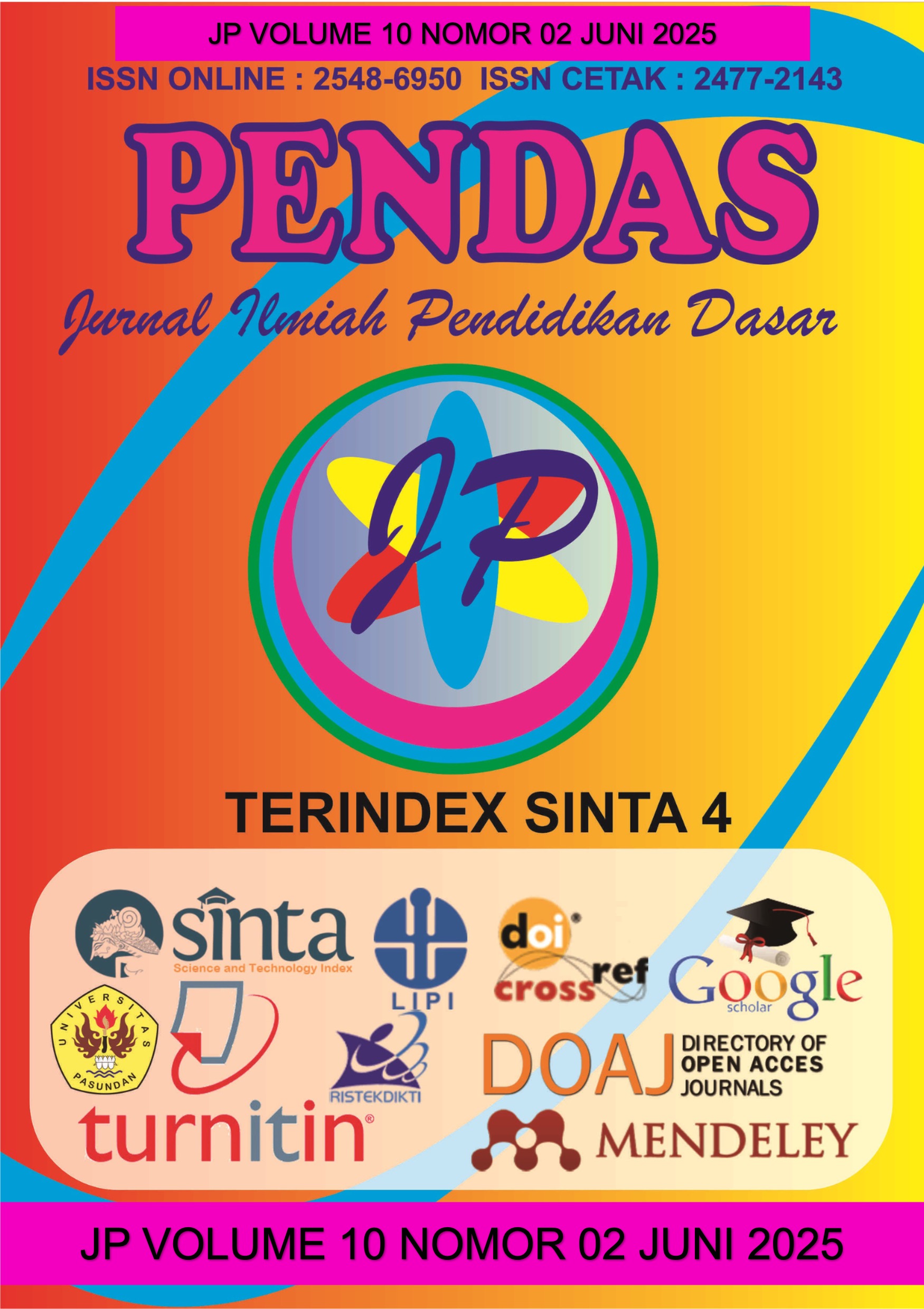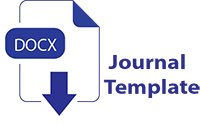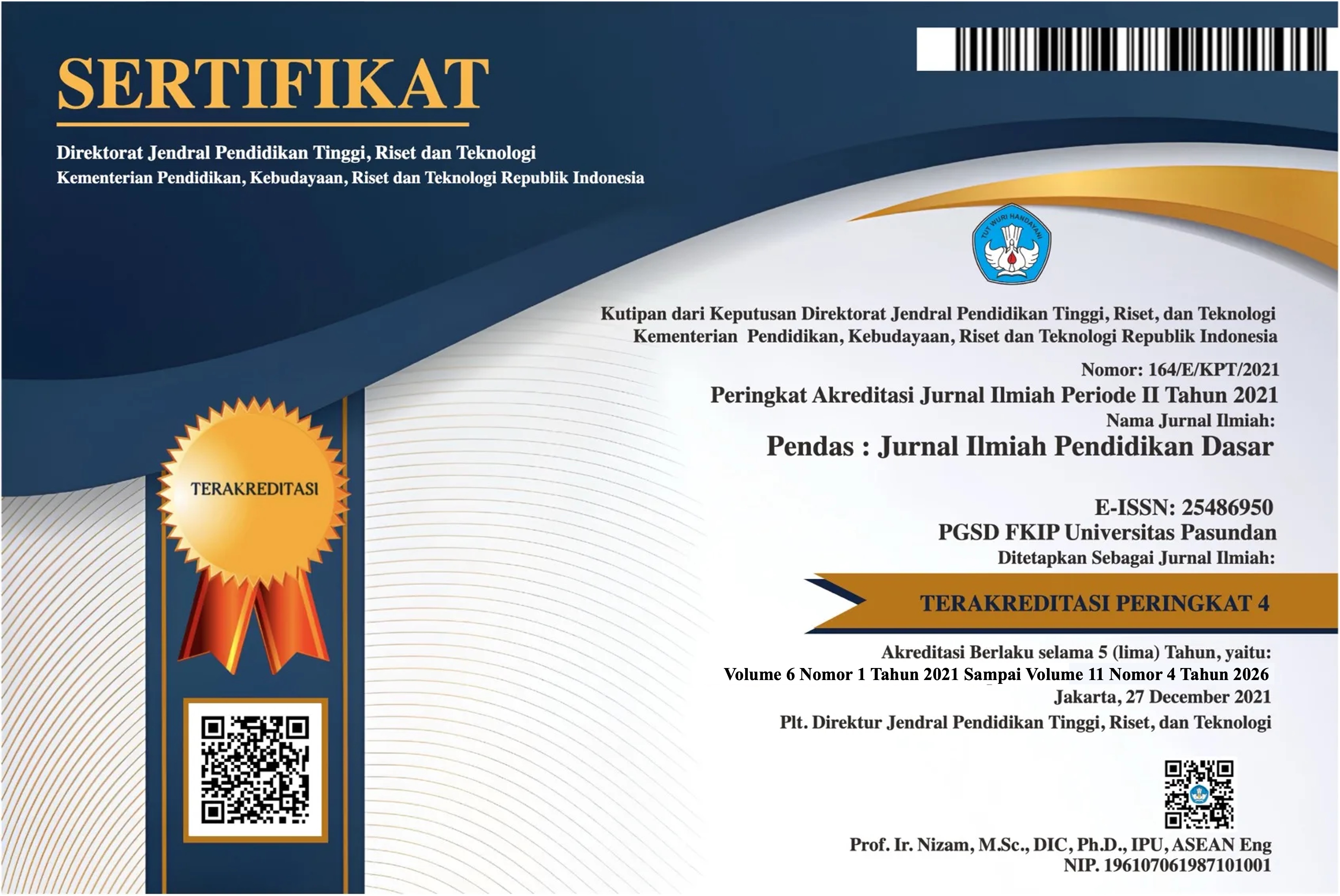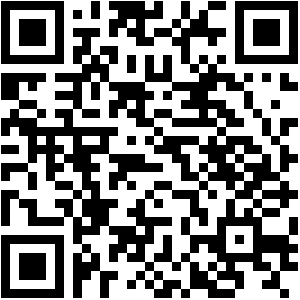IMPLEMENTASI QUANTUM LEARNING BERBANTUAN QR PADA PEMBELAJARAN IPAS SISWA KELAS 6
DOI:
https://doi.org/10.23969/jp.v10i02.25644Keywords:
Learning Science, Quantum Learning Approach, QRAbstract
This study aims to improve the results of Science Learning Outcomes Using the QR-Assisted Quantum Learning Method. This study uses the Quantum Learning Method. The subjects of this study were grade VI students of SD IT Maryam Muraith in the even semester of the 2024/2025 academic year consisting of 14 students. This study uses a classroom action approach (CAR) consisting of two cycles, each cycle includes the planning, implementation, observation, and reflection stages. The instruments used include observation sheets, learning outcome tests, and documentation. The results of the study show that the application of QR-assisted Quantum Learning can significantly improve student learning outcomes. In cycle I, the average student score increased from the low category to the medium category, and in cycle II there was a further increase to reach the high category. This increase occurred because the Quantum Learning method supported by QR media was able to create an interactive learning atmosphere, trigger curiosity, and increase student involvement in the learning process. Thus, the application of this method is recommended as an alternative effective Science learning strategy at the elementary school level.
Downloads
References
Afifah, L. P., Suyatno, S., Aruben, R., & Kartini, A. (2017). Faktor-faktor yang berhubungan dengan konsumsi fast food pada remaja obesitas di SMA Theresiana 1 Semarang tahun 2017. Jurnal Kesehatan Masyarakat, 5(4).
Anggraini, F. (2017). Pengaruh motivasi, kompensasi, dan pengembangan karir terhadap kinerja guru (Skripsi, UIN Syarif Hidayatullah Jakarta).
Armis, A. (2017). Pengaruh kecerdasan emosional terhadap kemampuan komunikasi matematis siswa kelas VII sekolah menengah di Sokaraja Kabupaten Banyumas. Prosiding Seminar Nasional Matematika dan Pendidikan Matematika, Universitas Muhammadiyah Purwokerto.
Bender,W.N.. 1999. Stress, Depression, and Sui‐cide Among Students With
Learning Disabili‐ties: Assessing The Risk. Learning Disability Quarterly, 22, 143–156
DePorter, B., & Hernacki, M. (1999). Quantum Learning: Membiasakan Belajar Nyaman dan Menyenangkan. Kaifa Learning.
Hake, R. R. (1998). Interactive-engagement versus traditional methods: A six-thousand-student survey of mechanics test data for introductory physics courses. American Journal of Physics, 66(1), 64–74.
Hamalik, O. (2001). Proses belajar mengajar. Bumi Aksara.
Kemendikbudristek. (2021). Panduan Implementasi Kurikulum Merdeka Jenjang SD. Jakarta: Kementerian Pendidikan, Kebudayaan, Riset, dan Teknologi.
Mulyati, Y., dkk. 2008. Keterampilan Berbahasa Indonesia SD. Jakarta: Universitas Terbuka
Nourbakhsh, S. 2014. The Efficacy of Multisensory Method and Cognitive Skills Training on Perceptual Performance and Reading Ability in Learning and NonLearning Based Tests of Male Dyslexic Students in Tehran Iran. Asian Journal of Social Sciences & Humanities Vol. 3(1) February. Faculty of Human Ecology, Universiti Putra Malaysia, Serdang, Malaysia.
Rahim, Farida. 2005. Pengajaran Membaca di Sekolah Dasar. Jakarta: Bumi Aksara
Santrok, John W. 2008. Perkembangan Anak Edisi II Jilid I .Jakarta: Erlangga
Suartama, I. K. (2019). Teknologi Pembelajaran Abad 21. Kencana.
Oktavia, R. (2016). Hubungan antara Cara Belajar dengan Prestasi Belajar IPA di SMP Negeri Se-Kecamatan Metro Timur Kota Metro Tahun Ajaran 2015/2016.Bandar Lampung: Universitas Lampung
Walton, Margaret. 1998. Teaching Reading and Spelling to Dyslexic Children. David Fulton Publishers: 2 Park Square, Milton Park, Abingdon, Oxon OX14 4RN. 270 Madison Avenue, New York, NY 10016
Downloads
Published
Issue
Section
License
Copyright (c) 2025 Pendas : Jurnal Ilmiah Pendidikan Dasar

This work is licensed under a Creative Commons Attribution 4.0 International License.



















